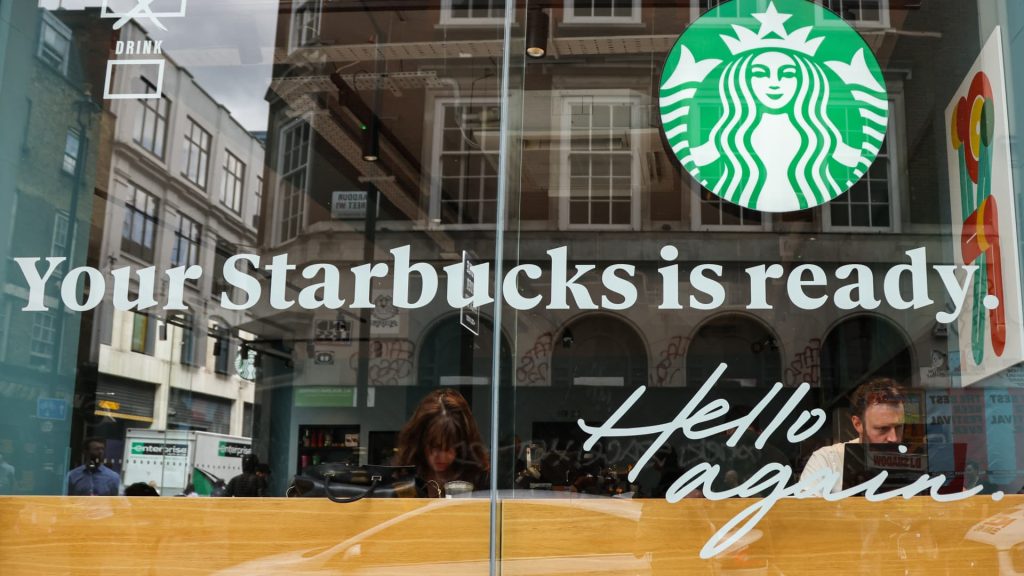The deal Starbucks made to sell a majority stake in its China business is underwhelming but clears the way for a sharper focus on its core U.S. operations. “I did think there was going to be more upside,” Jim Cramer said Tuesday during the Club’s Morning Meeting. His comments follow Starbucks’ announcement late Monday that the coffee chain will sell a 60% stake in its China retail operations for roughly $4 billion to Chinese private equity firm Boyu Capital. The joint venture allows Starbucks to retain a 40% stake and the ability to license its brand and intellectual property. Management said, “Starbucks expects the total value of its China retail business to exceed $13 billion,” when considering all facets of the deal. Starbucks was seeking a partner with a firm grasp of the Chinese market and consumer to fend off competition from local coffee brands such as Luckin and Cotti. Boyu, which has made its name investing in tech, has recently branched out into consumer brands, including bubble tea giant Mixue and luxury department store operator SKP. “We aim to bring the Starbucks experience to more customers, in more cities across China. We see a path to grow from today’s 8,000 Starbucks coffeehouses [there] to more than 20,000 over time,” Starbucks CEO Brian Niccol said in a statement . Jeff Marks, director of portfolio analysis for the Club, said he had expected that Starbucks would sell a 50% stake, not a controlling interest. “That was disappointing,” but at least it is done, Jim stressed, adding that it allows Niccol to put more energy into turning around the U.S., and other markets like Europe and Latin America, where the company maintains greater control and has more room to execute The U.S., which is Starbucks’ biggest market, showed signs of stabilization last week when the company reported its fiscal 2025 fourth-quarter . Same-store sales turned positive in September and momentum continued into October. That progress gave us the conviction to add to our Starbucks position on Monday. Another silver lining of the deal is flexibility. Jeff said there is “a lot of optionality” with how to deploy the proceeds of the China deal. Management can use those funds not only to pay down debt and fix the balance sheet, but also to invest in its new Green Apron Service operating model , or buy back shares as a sign of confidence in the turnaround story, which has taken longer than expected. Jim reminded investors Tuesday that Starbucks is a “long-term turn.” While we had initially hoped Niccol could implement a swift overhaul, as he did as Chipotle CEO, which resulted in a revival of the beleaguered Mexican food chain within a year. The problems at Starbucks, however, have proven more pervasive and more entrenched. Niccol was one year on the job as Starbucks CEO as of Sept. 9. SBUX YTD mountain Starbucks (SBUX) year-to-date performance Another factor working against Starbucks, according to Jim, is that the consumer is in a “bear market.” U.S. consumers – particularly among lower and middle-income groups – are scaling back their discretionary spending, which has led to underperformance in the broader restaurant sector. Restaurant stocks were down about 9% on average last week, according to Deutsche Bank, with fast casual seeing the weakest performance. This was led by Chipotle’s 23% stock decline over the period following lackluster quarterly earnings. Deutsche Bank analysts described Starbucks’ steady stock performance last week as “a bit of an anomaly to the industry,” pointing to bright spots in the company’s recent earnings release. On Tuesday, Starbucks stock fell nearly 2% as the broader stock market sold off. Shares have tumbled nearly 14% since the start of 2025, compared to the S & P 500’s more than 15% advance. Bottom line While the China deal’s structure wasn’t what we were expecting, it does lock in meaningful cash for Starbucks to improve its other operations. The move helps retain a healthier long-term stake in the company’s second-largest market, as well. Plus, the deal could prove to be a smart move down the road, given that local partners have a better grasp of China’s complex and competitive coffee market. All of this, combined with signs of operational recovery in its turnaround story, allows us to maintain our buy-equivalent 1 rating and $100 price target on the stock. (Jim Cramer’s Charitable Trust is long SBUX. See here for a full list of the stocks.) As a subscriber to the CNBC Investing Club with Jim Cramer, you will receive a trade alert before Jim makes a trade. Jim waits 45 minutes after sending a trade alert before buying or selling a stock in his charitable trust’s portfolio. If Jim has talked about a stock on CNBC TV, he waits 72 hours after issuing the trade alert before executing the trade. THE ABOVE INVESTING CLUB INFORMATION IS SUBJECT TO OUR TERMS AND CONDITIONS AND PRIVACY POLICY , TOGETHER WITH OUR DISCLAIMER . NO FIDUCIARY OBLIGATION OR DUTY EXISTS, OR IS CREATED, BY VIRTUE OF YOUR RECEIPT OF ANY INFORMATION PROVIDED IN CONNECTION WITH THE INVESTING CLUB. NO SPECIFIC OUTCOME OR PROFIT IS GUARANTEED.


